Chen Chen at FAWC
Poet and author Chen Chen will speak in the summer faculty reading series at the Fine Arts Work Center in Provincetown on Monday, July 25, 6 p.m.
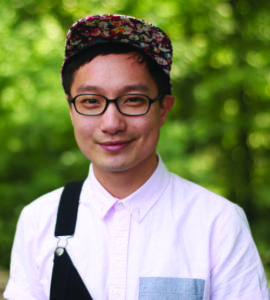
Chen’s poetry, while understated and unsentimental, communicates deep emotion. An excerpt from his poem “Poplar Street” explores the speaker’s complicated familial relationships: “Sometimes, parents & children/ become the most common strangers. Eventually,/ a street appears where they can meet again.”
Chen’s poetry collection When I Grow Up I Want to Be a List of Further Possibilities was published in 2017; it was long-listed for the National Book Award and won the A. Poulin Jr. Poetry Prize, GLCA New Writers Award, and Thom Gunn Award for New Poetry.
Chen will be teaching a workshop at FAWC from July 24 to 29 where he’ll discuss life, language, and other enduring questions. —Eve Samaha
Milton H. Greene at Gary Marotta
There are 50 photos, some in color and others in black and white, of Marilyn Monroe at Gary Marotta Fine Art (162 Commercial St., Provincetown) now through Aug. 10.
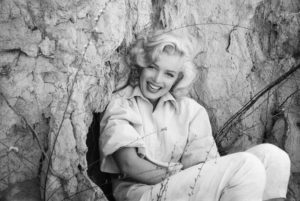
All of the photos were taken by Milton H. Greene, an icon of American fashion and tabloid photography, best known for his personal and creative relationship with Monroe.
Born in New York City in 1922, Greene first photographed Monroe in 1953. A couple of years later, when Monroe first left Los Angeles for New York, she stayed with Greene, his wife, and son in Connecticut.
Monroe was one of the first female celebrities to wrest control over her career from industry executives — to aim to be more than just the pretty face of the fat money machine. In 1956, she founded Marilyn Monroe Productions. The first person she enlisted in the business was Greene.
The photos on display at Marotta are stunning for their naturalism. These are not Warhol’s garish, Factory-produced blow-ups, but are simple photos of Monroe as she was. In one, Monroe is seated against the rocks at Laurel Canyon. It captures her in a girl-scout-hiker moment but still glamorous, as Monroe inevitably was. —Paul Sullivan
Editor’s note: Because of a reporting error, an earlier version of this item, published in print on July 21, incorrectly named the gallery where the Greene photos are being shown. It is Gary Marotta Fine Art, not Albert Merola Gallery.
The Mask Project at WHAT Gallery
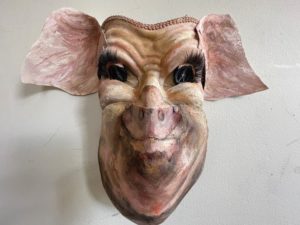
“For millennia, nearly every culture around the world has incorporated masking into their ritual and storytelling practice,” says Christopher Ostrom, the producing artistic director at Wellfleet Harbors Act Theater. “It is no surprise that the enduring symbol for the dramatic arts is the joined comedy and tragedy masks.”
In the Mask Project, a new exhibition at the WHAT Gallery on display through Sept. 17, 15 artists have transformed either a comedy or a tragedy mask. The gallery is open Wednesday through Friday, noon to 4 p.m., to ticketholders before performances, and by appointment.
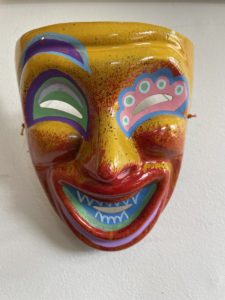
One mask by Donna Pomponio has become a pig, with black buttons for eyes, a grotesquely creased forehead, and long false eyelashes.
Another, by Andy Jacobs, is a comedy mask. It’s shiny, with cartoonishly cheerful colors and one arching purple eyebrow. Red paint coats the mouth and chin and sprays up the face against the pronounced cheeks and above one eye. It almost looks like blood.
Underneath each wildly different mask is a classic grin or grimace. Artists could choose whether to make the tragedy mask smile and the comedy mask cry, to decorate the existing expression (one mask drips tears of stringed beads), or to do something else, like add a pig snout.
—Dorothea Samaha
Edith Lake Wilkinson at PAAM
Within the Provincetown Art Association and Museum’s archives is a black-and-white photograph of three artists: Karl Knaths, Edith Lake Wilkinson, and Blanche Lazzell. Wilkinson, standing in the middle, was unidentified for many years, flanked by two important figures in the Provincetown art scene.
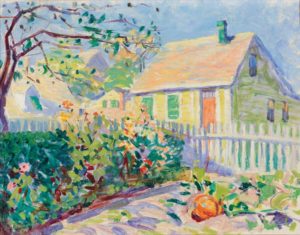
Her artwork — and the tragic story of her institutionalization — has emerged because of a 2015 documentary, Packed in a Trunk: The Lost Art of Edith Lake Wilkinson. Her great-niece, Jane Anderson, made the film and will speak at PAAM on Thursday, July 21 at 6 p.m. She will present Wilkinson’s sketch books and explain the hidden clues she found in them about her personal life.
The accompanying exhibition, on view until Aug. 21, shows Wilkinson firmly rooted in the tradition of early 20th-century Provincetown painting. She studied with Charles Webster Hawthorne and was friends with Lazzell, who was known for her white-line woodblock prints. The show features Wilkinson’s prints made using this technique, as well as paintings of flowers and Provincetown street scenes.
There’s a disarming charm to her work. She depicted her surroundings with bright color, often leaving bits of white canvas showing through. Her career was cut short when she was just 55 after her parents died and she was sent to an asylum for the mentally ill, at which point her art was packed up and shipped by her nephew to Wheeling, W.Va., where it remained until it was uncovered by Anderson. —Abraham Storer



